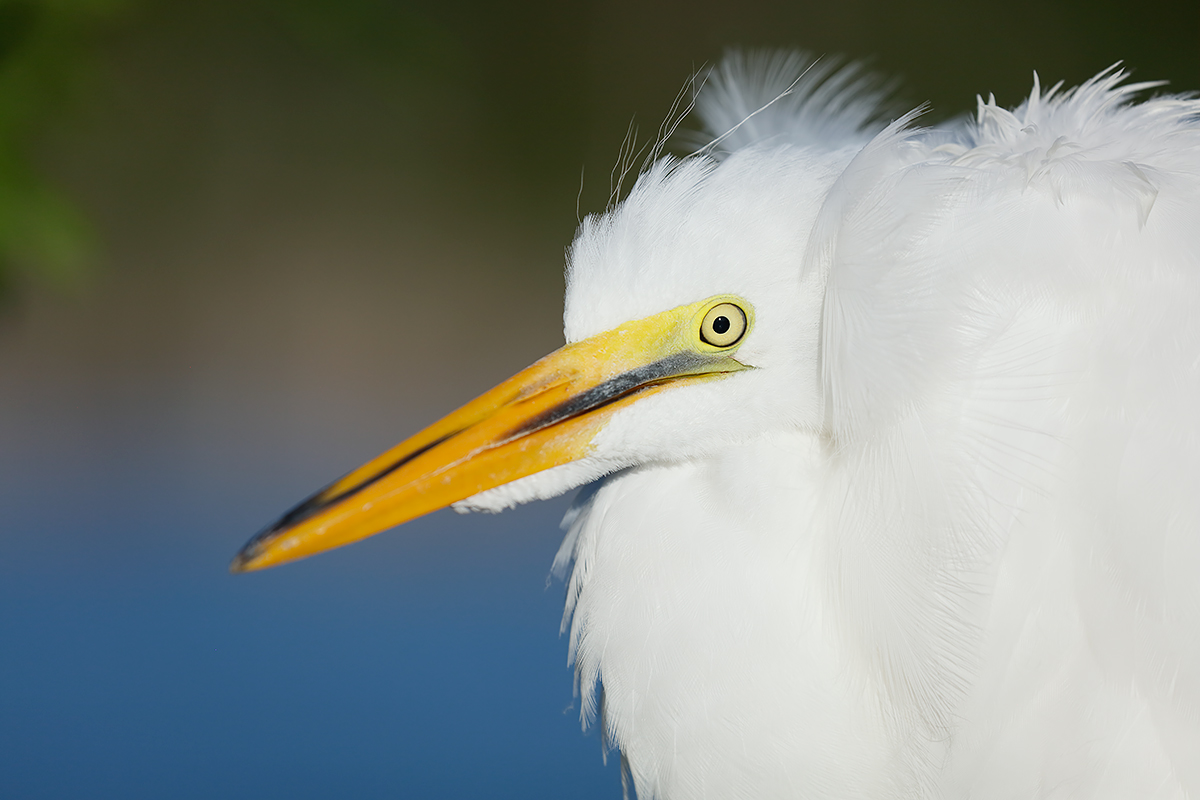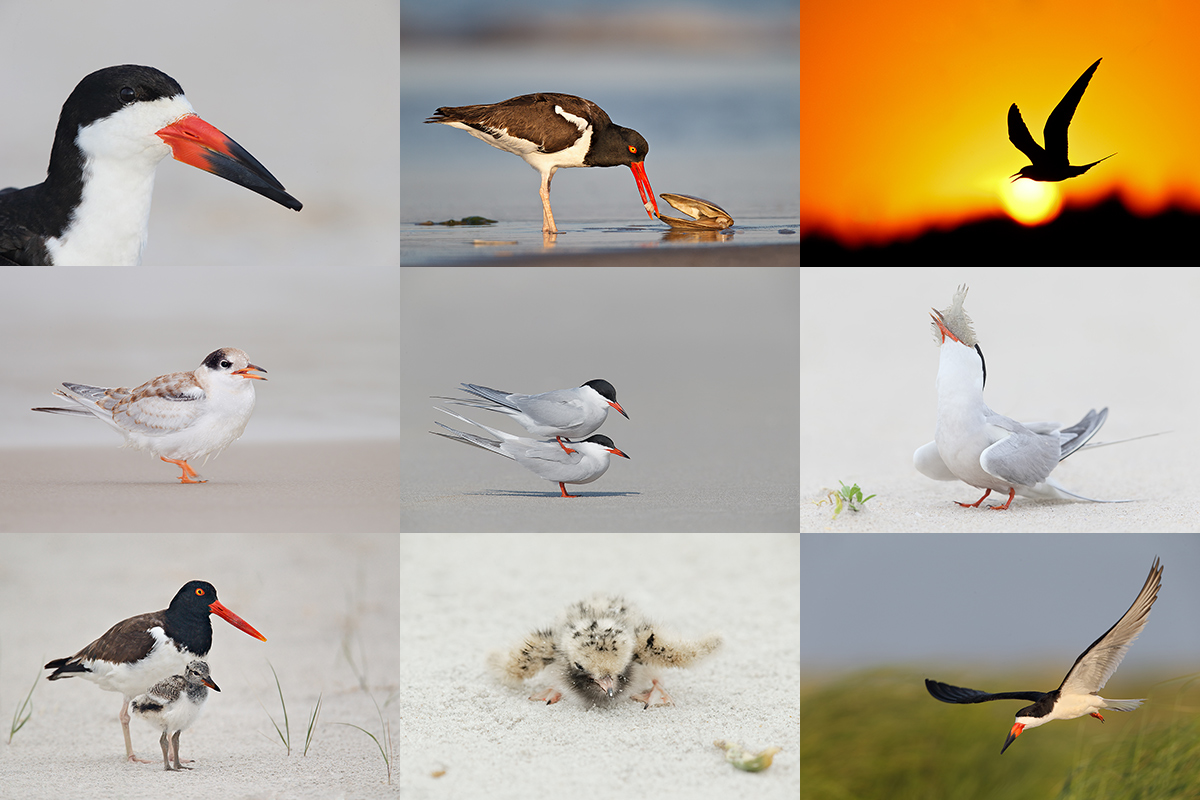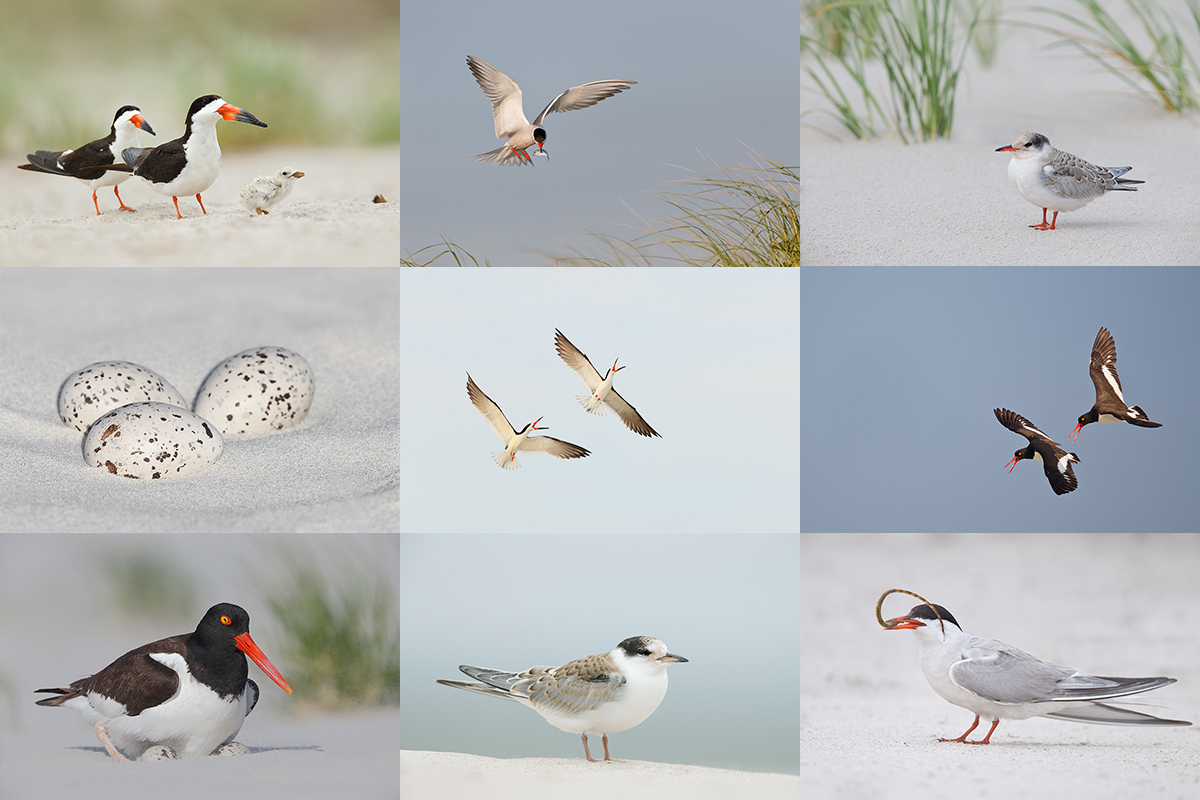What’s Up?
I had lots more energy on Sunday than I did on Saturday. I took care of some Nature’s Best Contest business and micro-adjusted several lenses with my new 1D X. I have never seen such tight AF clusters… Overall I had one of my best days in recent memory.
I am heading over to Fort DeSoto a day early so that I can do some scouting for the IPT on Monday afternoon and Tuesday morning.
The Streak
Today’s blog post marks 185 days in a row with a new educational blog post, dozens of new topics to cover, and no end in sight until my big South America trip next fall. As always-–and folks have been doing a really great job recently–-please remember to use our B&H links for your major gear purchases. For best results use one of our many product-specific links; after clicking on one of those you can continue shopping with all subsequent purchases invisibly tracked to BAA. Your doing so is always greatly appreciated. Please remember: web orders only. Please remember that if you are shopping for items that we carry in the BAA Online Store (as noted in red at the close of this post below) we would appreciate your business.
|
This image was created at Gatorland last Thursday with the hand held Canon EF 100-400mm f/4.5-5.6L IS II USM lens (at 360mm) and the mega mega-pixel Canon EOS 5DS R. ISO 400. Evaluative metering +1/3 stop: 1/3200 sec. at f/6.3. Daylight WB. The selected AF point was two to the right and one row up from the center AF point/AI Servo Expand/Rear Focus AF as framed was active at the moment of exposure (as is always best when hand holding). The selected point fell on the bottom part of the bird’s eye. Click here to see the latest version of the Rear Focus Tutorial. Click on the image to see a larger version. Great Egret large chick |
Gatorland Report
As noted previously, I spent Thursday morning past at Gatorland with private clients Dixon and Carolyn Soracco. They were amazed by the birds and the nests and their proximity to the boardwalk. I did mention to them that as far as quality photographic opportunities for early May that the place was poor overall. We had a few very good opportunities, especially with the large chick shown in today’s featured image. Do note that for folks with long lenses afternoons may be better.
There were fewer than a dozen photographers present. In most years on this date there would be two or three dozen shooters. I took that to mean that the word is out: there are just not as many good situations as in a typical year. As is usual at Gatorland, most folks simply had no clue as to what a good situation is. Folks were working well off light angle and pointing their lenses at incredibly cluttered nests. All the while our single large chick posed for us for more than an hour with lovely distant backgrounds… The more things change, the more they stay the same.
100-400 II Versatility
To start the day I loaned my 100-400II to Carolyn. When our subject came into the sun I called her over and coached her to some great images. I was working with the 70-200mm f/2.8L IS and the 2X III TC but the 100-400 II was much better for the job because of its one-meter close focus. After Carolyn made lots of good ones I borrowed my lens to create the image above. The 1-4II is unbeatable when working in close quarters.
Depth-of-Field Question…
With the bird’s eye super-sharp and the tip of the beak not in sharp focus, would I have been better off going to a small aperture like f/13? Why or why not? I did have lots of shutter speed to work with…
|
From upper left clockwise to center: Black Skimmer head portrait, American Oystercatcher dining on surf clam flesh, Common Tern at sunset, Common Tern adult swallowing flatfish, Black Skimmer in flight, newborn Common Tern chick, American Oystercatcher with chick, fresh juvenile Common Tern (with fill flash), and Common Terns copulating. |
Nickerson Beach Terns/Skimmers/Oystercatchers Instructional Photo-Tour (IPT): July 18-22, 2016. 4 1/2 DAYS: $1899. Limit 10/Openings 8.
Meet and greet at 3pm on the afternoon of Monday, July 18. Limit 10.
The primary subject species of this IPT will be the nesting Common Terns. The trip is timed so that we will get to photograph tiny chicks as well as fledglings. There will be lots of flight photography including adults flying with baitfish. Creating great images of the chicks being fed is a huge challenge. In addition to the terns we will get to photograph lots of Black Skimmers courting, setting up their nesting territories, and in flight (both singles and large pre-dawn flocks blasting off). Midair battles are guaranteed on sunny afternoons. And with luck, we might even see a few tiny chicks toward the end of the trip. We will also get to photograph the life cycle of American Oystercatcher. This will likely include nests with eggs and tiny chicks, young being fed, and possibly a few fledglings.
Nesting Piping Plover is also possibly. There will be lots of gulls to photograph; most years I am able to find a few Lesser Black-backed Gulls of varying ages in addition to the Herring, Ring-billed, and Great Black-backed Gulls. You will learn to identify and age the various gull species. There will likely be some Willets feeding along the surf and with luck we might get to photograph a handsome juvenile or two. In addition to the locally breeding shorebirds, we will likely get to see some southbound migrant arctic-and sub-arctic breeding shorebird species such as Sanderling, Semipalmated Plover, and maybe even Red Knot.
|
From upper left clockwise to center: Black Skimmers with tiny chick, Common Tern landing with baitfish for young, fledged Common Tern chick in dunes, American Oystercatchers/display flight, adult Common Tern with pipefish for chick, Common Tern fledgling in soft light, American Oystercatcher on nest with eggs, American Oystercatcher 3-egg clutch, battling Black Skimmers. |
The IPT Logistics
The tour will begin with a meet and greet on the afternoon of Monday, July 18, 2016. That will be followed by our first shooting session at the beach. From Tuesday through and including all of Friday we will have two photography sessions daily. Our morning sessions will start very early so that we are on the beach well before sunrise. We usually photograph for about four hours. Then we will enjoy a group brunch. We will always have a midday break that will include a nap for me. That followed by our daily afternoon classroom sessions that will include image review, workflow and Photoshop, and a review/critique of five of your trip images. Folks are always invited to bring their laptops to brunch for image sharing. I always have mine with me but heck, I am a big show-off. Afternoon in-the-field sessions generally run from 5pm through sunset.
Breakfasts are grab what you can. Four brunches are included. Dinners (if at all) will be on your own as we will often get back to the hotel at about 9pm. There is a fridge in every room and a supermarket within walking distance of the hotel so nobody should starve. You will learn a ton during the nine shooting sessions, the four in-classroom sessions, and even at lunch. Early morning and late afternoon parking is free. If we want to head back to the beach early we will need to arrange tight carpools and share the $30/vehicle parking fee. Non-photographer spouses, friends, or companions are welcome for $100/day, $450 for the whole IPT.
Save a space by calling Jim or Jen at the office at 863-692-0906 and arranging to leave your deposit of $599–credit cards are accepted for deposits only. Your balance will be due on April 18, 2016. I hope that you can join me for what will be an exciting and educational IPT.
Please Remember to use our Affiliate Links 🙂
To show your appreciation for my continuing efforts here, we ask, as always, that you get in the habit of using my B&H affiliate links on the right side of the blog for all of your photo and electronics purchases. Please check the availability of all photographic accessories in the BIRDS AS ART Online Store, especially the Mongoose M3.6 tripod heads, Induro tripods and ballheads, Wimberley heads and plates, LensCoats and accessories, and the like. We sell only what I have used, have tested, and can depend on. We will not sell you junk. We know what you need to make creating great images easy and fun. And we are always glad to answer your gear questions via e-mail.
I would of course appreciate your using our B&H affiliate links for all of your major gear, video, and electronic purchases. For the photographic stuff mentioned in the paragraph above we, meaning BAA, would of course greatly appreciate your business. Here is a huge thank you to the many who have been using our links on a regular basis and visiting the BAA Online store as well.
I would of course appreciate your using our B&H affiliate links for all of your major gear, video, and electronic purchases. For the photographic stuff mentioned in the paragraph above we, meaning BAA, would of course greatly appreciate your business. Here is a huge thank you to the many who have been using our links on a regular basis and visiting the BAA Online store as well.
Be sure to like and follow BAA on Facebook by clicking on the logo link upper right. Tanks a stack!
Typos
In all blog posts and Bulletins, feel free to e-mail or to leave a comment regarding any typos or errors. Just be right 🙂

















a, I’ve been following the answers closely and I’m with Belinda and B. Fletchers here, f/13 would make the beak sharp, and maybe even the feather on the back of the head, but would have negligible effect on the out-of-focus background (you’ve already said the background was far in the distance). You’ve also said this is a misunderstanding of the situation. Looking forward to your answer.
Yes, F13 would have rendered the beak sharp.
As you were close to the subject, this would have had a negligible effect on the out of focus background.
Probably not a. But b is definitely wrong… a
No. Do you have the exposure as is the eye is perfectly sharp and that’s all I care about.
I’m with you Henry 🙂 a
Here’s what I read from an expert (not from the internet):
“When you use large apertures to photograph nearby birds, the foreground and background will be thrown completely out of focus. In most instances, this is desirable – your backgrounds will be soft and beautiful. Different parts of the same bird, however, may not be in focus…
The number one reason for stoping down is to ensure enough depth of field so that all parts of the subject are in sharp focus.”
so, my answer to your question is yes, because of the explanation above.
Sorry, wrong answer 🙂
b-a
At F6.3 your lens, when used with such a high resolution sensor is close to its diffraction limit.
Stopping down to F13 may have increased the sharpness of the beak somewhat due to a small increase in depth of field – but at the expense of an overall decrease in sharpness including the eye.
The effect on background bokeh would have been minimal given the focal length, the close working distance and the (far) distant background.
Wrong answer 🙂
a
Hi Art, Given that you were very close to the subject and had plenty of exposure room, I would have gone for a smaller aperture as suggested. There would have been minimal change in BOK. Other possible options 1) Revise the focus point to just slightly up the birds beak, thus still keeping the eye in sharp focus, and including more of the beak in focus, 2) move slightly right, given you were hand-holding, to position yourself in a more parallel plane with the birds face, 3) Zoom-Out slightly to create more DOF and then crop-given the mega pixels of the 5DSR. Thanks for making all of us consider and evaluate the options towards a creating a stronger image ! Cheers Kent
Hi Art – Interesting question. There are online DOF calculators, but just using a chart, I get the following: If you are 7 feet from the bird, at 400mm and f5.6 your DOF is 11/16″. At f16, it is 1-1/8″, or 7/16″ more, with approximately half in front and half in back. So, even though your f/13 option would not have sharpened the background enough to worry about, it also would not have given you much more sharpness on the beak. Best to wait for the chick to turn more parallel to the camera plane.
Here is your big misunderstanding:
So, even though your f/13 option would not have sharpened the background enough to worry about…
a
Sorry to be off topic but I had to correct something I said in prior blog post. I said the 1DXII was better in a lot of small increments but not head and shoulders better than the 1DX. I had read an expert review which stated the noise levels at high ISOs were only slightly better than the 1DX. I have just finished creating noise profiles. My experience was very different from the report I had read. I was blown away by the improvement in noise at extreme ISOs. Up to 4000 ISO noise was really not a problem. What little noise there was looked very even and not ugly. (I still would have run NR but it would work great) Above 4000 Neat Image did a great job. I “only” did profiles to 20000 ISO but they looked good on the Neat Image calibration target. I then shot some real world shots at 20000 ISO, ran them through Neat image (with maximum NI sharpening) and was astounded how clean they were. I did notice that the really high ISO images responded best to output luminosity sharpening. So, I think the 1DXII is head and shoulders above the 1DX when it comes to extreme ISOs. And the red focus square!!
Probably f13 would have made the bill tip sharp, but probably would have brought out too much detail in the oof background (with those lovely colors).
Good morning Artie,
This off topic. I have a request! I’m sure that many viewers greatly admire your “cards” that you produce so beautifully. I would like to learn how one goes about creating those 3×3 cards, assuming he/she has some beautiful images to populate one (software, method, etc). I’m always impressed with your skill and care in choosing the 9 images, but that is another matter and definitely one of your many gifts. I just wanna a learn the process. Thank you!
Hi Glen, Sorry to be so tardy. Been busy. In Photoshop, I create a new file 1200 X 800 pixels. Then I crop each of the 9 horizontal images to 400 X 267 and drag a duplicate layer of each onto the new file. Then it is just a matter of working with the various layers. It helps to rename each layer with the name of the bird so that they are easier to identify when you need to move an image.
You can learn all that you need to know about working with layers so that you can create your own card in Digital Basics.
Namibia 2017 card coming soon.
artie
I do not know how close you were to the chick but chances are you were close enough to the subject that any ‘gain’ in DOF would have been minimal and certainly not enough to have a sharp tip of the bill and eye at that head angle.
At f6.3 and 360mm,you would probably have to be 35 – 40 feet to get a full foot of DOF( 6 inches in front and 6 inches behind point of focus) and that distance @ f13 you would get around 2 feet
(12 inches in front and 12 inches behind–sorry– my poor math skills don’t kick in until the coffee does its thing 🙂 )
Hi, Artie. I agree with Nikhil; f/13 would have wrecked that lovely, smoothly out-of-focus background; a very bad trade. I thought of you this morning when I was photographing a beautiful old Cape-Dutch wine estate here in Cape Town. I applied many lessons you’ve taught to make a pleasing image. Thanks again.
Hi Art
Greetings.
Thanks for the daily questions. It really gets our minds at work.
I think that as you were very close to the bird maybe within 12 feet as the bokeh is strong, a f13 Aperture may render the beak slighly more in focus but i guess the background may look a little more cluttered due to the aperture.